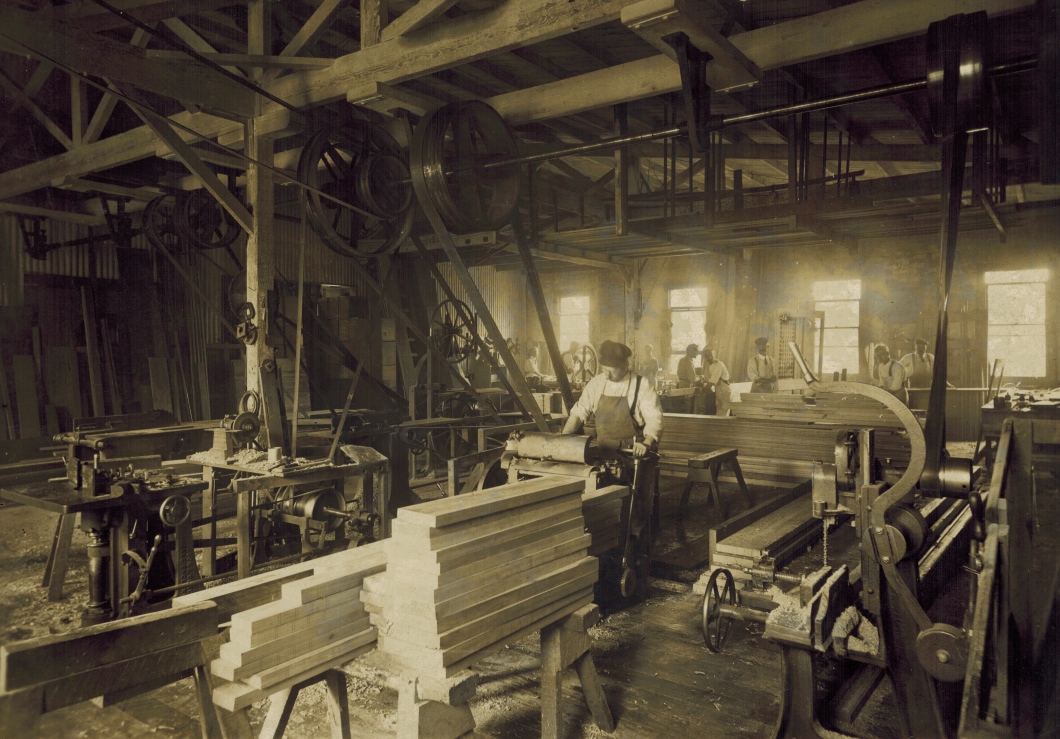The Carpenters Section in an ATL factory
Judging by the wooden flooring and ceiling this wood workshop, does not look like it belongs to the Automatic Totalisators Limited factory at Newtown, which had a corrugated iron roof and mostly stone like floors. It looks like it could be at the following factory at Chalmers Street in the Sydney CBD.The manufacture of mechanical and electromechanical computing machinery also required carpenters. Some of the ticket issuing machines had wooden parts. Peter Collier who was ATL's Chief Engineer in Victoria, wrote the following about three models of Julius Tote ticket issuing machines: All the old J6 J10 J8s were in wooden cases. Carpentry work was also required for the tote operator benches at the customer's premises. Additionally, some of the Julius Tote mainframes were enclosed inside wooden frames and indicator boards often had purpose built wooden housing.
I have read that George Julius' engineering consulting company Julius Poole and Gibson, benefited from the business of Automatic Totalisators by winning contracts to build tote houses and Julius Tote machine rooms on the customers premises to house the totalisator systems that were sold. This would keep the carpenters busy. A reference to this exists in Computer Resurrection the bulletin of the Computer Conservation Society ISSN 0958 7403 issue number 7 by Charles Norrie titled George Alfred Julius and his Automatic Totalisator. Charles writes Anecdotal evidence from Julius' son Awdry, who was the one son to go into Julius Poole & Gibson, suggests that though the totalisator was a separate venture from Julius' engineering consultancy, the latter benefited from the orders for buildings at racecourses. Julius' firm's order book suggests also that this was so.

Click on the image to go back to the Photo Gallery
The photographers stamp on this photograph reads Exchange Studios 49 Pitt St. Sydney WARD & FARRAN Proprietors